#Lighting Product Market Manufacturers
Explore tagged Tumblr posts
Text
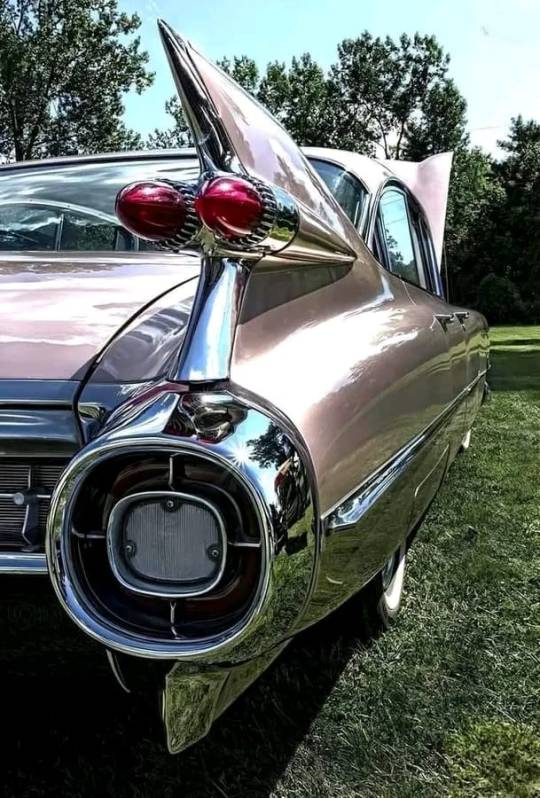
Cadillac was founded in 1902 by Henry Leland, who named the company after Antoine de la Mothe Cadillac, who happens to be the founder of Detroit. Just 6 short years later Cadillac brought the idea of interchangeable parts to the automotive industry and laid the ground work for modern mass production of automobiles. As a result, Cadillac became the first American car to win the prestigious Dewar Trophy from the Royal Automobile Club of England. After earning such high praise Cadillac adopted the slogan "Standard of the World."
In 1910, Cadillac became the first company to offer a passenger car with a fully enclosed cabin, a major change from the vehicles of the time. Two years after that, in 1912, the company released the Model Thirty, the car with no crank, which was the first production car to feature an electronic self-starter, ignition, and lighting. By dropping the crank starter, Cadillac opened the door to women drivers, and was able to bring the prestigious Dewar trophy back to Detroit, making Cadillac the only car manufacturer to claim the award twice. Nearly three years later, Cadillac brought the world the V-type, water-cooled, eight cylinder (V8) engine, which would become the signature of the Cadillac brand.
The Roaring 20's was not only a big decade for the country but was also important for Cadillac. In 1926, Cadillac branched out and offered customers more than 500 color combinations to choose from. As the famous Henry Ford saying goes, you can have any color you want, as long as it's black. Cadillac changed this mentality. That same year, the company brought in designer Harley Earl to design the 1927 LaSalle convertible coupe, which made the car the first to be designed from a designer's perspective rather than an engineering one. What Earl created was elegant, with flowing lines, chrome-plate fixtures, and an overarching design philosophy, that made the Cadillac brand known for beauty and luxury.
In the middle of the 1930's a midst The Great Depression, while most companies and families were struggling Cadillac created the first V-type 16-cylinder engine for use in a passenger car. This engine would go on to be one of the most iconic engines in Cadillac history. Shortly thereafter, Cadillac released a V12 version to give buyers something between the already popular V8 and new V16 engines.
Cadillac went quiet in the 1941's when they suspended automobile production to help produce planes for the war. After the war ended Cadillac adapted some of the aircraft technology and created the first ever tailfin on a vehicle. This feature is now found on almost every car and was one of the biggest reasons that Cadillac was given the first ever Car of the Year award in 1949.
The tailfin took off rather quickly and by the mid to late 1950's it was being featured heavily in the design of nearly every vehicle. Also in the 50's Cadillac began developing power steering, which helped the automaker take third, tenth, and eleventh places at the 24 Hours of Le Mans. After Cadillac's stunning "victories" power steering quickly became the new standard of the industry.
Small but meaningful innovations filled the 1960's for Cadillac. In 1963, the company made front seatbelts standard in their vehicles, which lead to the eventual passing of a federal law requiring front seatbelts in all vehicles just one year later. Then, in 1964, Cadillac brought to market automatically controlled headlamps and redefines luxury with Comfort Control, the industry's first thermostatically controlled heating, venting, and air-conditioning system. Over the next few years, Cadillac introduced variable-ratio power steering, electric seat warmers, and stereo radio.
While the 1960's were fairly quiet, with only some smaller, luxury items being introduced, Cadillac started out 1970 with a major bang. Cadillac opened the decade by unveiling the 400 horsepower, 8.2-liter engine Eldorado. With its completely redesigned axle this model boasted the highest torque capacity of any passenger car available at the time. Closing out the decade, Cadillac brought to market the 1978 Seville which used onboard microprocessors in its digital display. This started the era of the computerized automobile.
Throughout the 1980's Cadillac laid low, working on some new technologies that would come to market in the early parts of the 1990's. The first feature to debut was an electronic traction control system on front-wheel drive vehicles. Cadillac began offering this as a standard feature on the 1990 Cadillac Allante. This same year Cadillac would go on to win the Malcolm Baldrige National Quality Award. Two years later, in 1992, the company developed a feature that allowed the engine to run for up to 50 miles without coolant, and a unique induction system for near-perfect fuel distribution. The Seville Touring Sedan of that year would become known as the "Cadillac of the Year" thanks to features such as an all electronically controlled Powertrain, traction control, anti-lock brakes and speed-sensitive suspension. Closing out the decade, Cadillac introduced the, now iconic, Escalade SUV.
CELEBRATING 100 YEARS AS 'THE STANDARD OF THE WORLD'
Coming up on the 100th anniversary of the Cadillac brand, the company had to do something big or the decade, and they did not disappoint. Cadillac started off the 200's by introducing the F-22 stealth aircraft inspired Cien Concept, which ended up winning a few design awards. Later in the decade, in 2008, Cadillac expanded the Escalade SUV by making it the world's first full-size luxury hybrid SUV. In the same year, the company redeveloped the CTS Sedan. This redesign has been incredibly popular and even won the coveted 2008 Car of the Year award. A short year later, the performance edition CTS-V, becomes the fasted V8 production sedan in the world, establishing a record lap time of 7:59:32 on Germany's famed Nürburgring.
#cadillac#cadillac eldorado#cadillac fleetwood#cadillac deville#cadillac coupe de ville#Cadillac escalade#car#cars#Cadillac Escalade SUV
67 notes
·
View notes
Text
Many Small Steps
This is the list written by Andrea Cohen-Kiener in her book "Claiming the Earth as Common Ground". It is her list of how to join the Ecology Action Alliance. There are no dues, or any requirements for membership other than to choose three things from the list to begin immediately, and to add one item from the list each week until you are living the most ecological lifestyle possible FOR YOU.
I highly recomend reading this book.
I will recycle whatever I can through my municipality.
I will buy snacks and other foods in degradable (paper) containers whenever possible
I will avoid buying/using clothes that require dry cleaning
I will choos food and other products in the most ecological packaging availible(Paper, cotton and glass as opposed to plastic).
I will not buy/use Styrofoam products
I will not buy/use aerosal cans.
I will start/expand my garden
I will reduce/eliminate toxic pesticides in my lawn and garden.
I will purchase clean, renewable energy through my electric utility (www.gocleanenergy.com)
I will join a gardening club.
I will establish a bartering relationship with a neighbor.
I wil set a radius (two blocks/two miles?) and make a commitment to walk everywhere I need to go within that radius.
I will choose one day a week to refrain from driving.
I will buy/repair/use a bicycle.
I will make a serious and sustained effort to carpool and combine driving errands.
I will prioritize my neighborhood merchants.
I will repair and reuse major appliances whenever possible.
I will donate or finds a use for items I no longer wish to use whenever possible.
I will patronize the used goods market whenever possible.
I will buy/utilize hand-powered appliances and tools whenever possible.
I will become an urban livestock keeper (bees, eggs, poultry).
I will copy this list and encourage one persona week to become a member of the Ecology Action Alliance.
I will reduce/eliminate toxic cleaning supplies and replace them with nonpoisonous cleaning supplies in my home/workplace.
I will make a sustained effort to turn off appliances and lights that are not in use.
I will encourage retailers and manufacturers to reduce/simplfy packaging material.
I will contract for a home energy audit (contact your utility company for details).
I will use natural light and ventilation (windows!) whenever possible.
I will use simple measures (massage, tea, rest) when dealing with common ailments.
I will ask friends to consider natural products and materials when choosing gifts for me.
I will bring my own cloth or paper bags for shopping trips.
I will eat the most wholesome and unadultered diet possible.
I will support bussinesses that promote environmental awareness.
I will join/contribute to an environmental group.
I will buy/use recycled paper whenever possible.
I will ask my grocer to carry local/organic produce.
I will ask my grocer to carry alternatives to Styrofoam products.
I wil lobby political representatives to make the enviorment a priority.
I will petition my civic groups (school, business, congregation) to conserve, recycle and consume responsibly.
I will enjoy moments outside each day.
I will learn about the vegetation and wildlife in my area.
I will study and be a resource for my community for one aspect od the enviornmental agenda (solid waste, conservation, the charitable network, ecology legislation, whole foods, alternative healing, etc.).
49 notes
·
View notes
Text
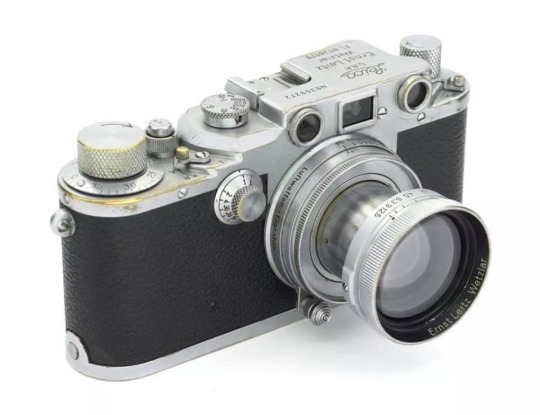
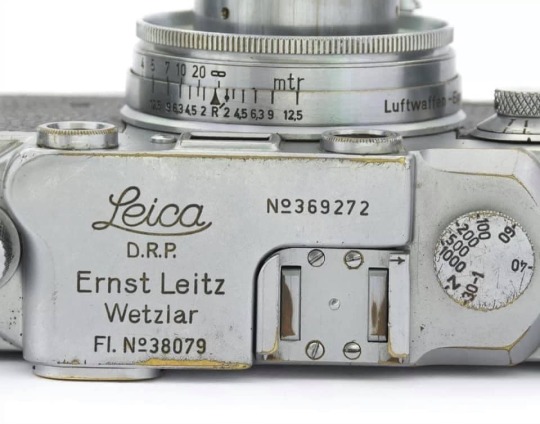
LEICA AND THE JEWS
The Leica is the pioneer 35mm camera. It is a German product - precise, minimalist, and utterly efficient.
Behind its worldwide acceptance as a creative tool was a family-owned, socially oriented firm that, during the Nazi era, acted with uncommon grace, generosity and modesty. E. Leitz Inc., designer and manufacturer of Germany's most famous photographic product, saved its Jews.
And Ernst Leitz II, the steely-eyed Protestant patriarch who headed the closely held firm as the Holocaust loomed across Europe , acted in such a way as to earn the title, "the photography industry's Schindler."
As soon as Adolf Hitler was named chancellor of Germany in 1933, Ernst Leitz II began receiving frantic calls from Jewish associates, asking for his help in getting them and their families out of the country. As Christians, Leitz and his family were immune to Nazi Germany's Nuremberg laws, which restricted the movement of Jews and limited their professional activities.
To help his Jewish workers and colleagues, Leitz quietly established what has become known among historians of the Holocaust as "the Leica Freedom Train," a covert means of allowing Jews to leave Germany in the guise of Leitz employees being assigned overseas.
Employees, retailers, family members, even friends of family members were "assigned" to Leitz sales offices in France, Britain, Hong Kong and the United States, Leitz's activities intensified after the Kristallnacht of November 1938, during which synagogues and Jewish shops were burned across Germany.
Before long, German "employees" were disembarking from the ocean liner Bremen at a New York pier and making their way to the Manhattan office of Leitz Inc., where executives quickly found them jobs in the photographic industry.
Each new arrival had around his or her neck the symbol of freedom - a new Leica camera.
The refugees were paid a stipend until they could find work. Out of this migration came designers, repair technicians, salespeople, marketers and writers for the photographic press.
Keeping the story quiet The "Leica Freedom Train" was at its height in 1938 and early 1939, delivering groups of refugees to New York every few weeks. Then, with the invasion of Poland on Sept. 1, 1939, Germany closed its borders.
By that time, hundreds of endangered Jews had escaped to America, thanks to the Leitzes' efforts. How did Ernst Leitz II and his staff get away with it?
Leitz, Inc. was an internationally recognized brand that reflected
credit on the newly resurgent Reich. The company produced cameras, range-finders and other optical systems for the German military. Also, the Nazi government desperately needed hard currency from abroad, and Leitz's single biggest market for optical goods was the United States.
Even so, members of the Leitz family and firm suffered for their good works. A top executive, Alfred Turk, was jailed for working to help Jews and freed only after the payment of a large bribe.
Leitz's daughter, Elsie Kuhn-Leitz, was imprisoned by the Gestapo after she was caught at the border, helping Jewish women cross into Switzerland . She eventually was freed but endured rough treatment in the course of questioning. She also fell under suspicion when she attempted to improve the living conditions of 700 to 800 Ukrainian slave laborers, all of them women, who had been assigned to work in the plant during the 1940s.
(After the war, Kuhn-Leitz received numerous honors for her humanitarian efforts, among them the Officier d'honneur des Palms Academic from France in 1965 and the Aristide Briand Medal from the European Academy in the 1970s.)
Why has no one told this story until now? According to the late Norman Lipton, a freelance writer and editor, the Leitz family wanted no publicity for its heroic efforts. Only after the last member of the Leitz family was dead did the "Leica Freedom Train" finally come to light.
It is now the subject of a book, "The Greatest Invention of the Leitz Family: The Leica Freedom Train," by Frank Dabba Smith, a California-born Rabbi currently living in England.
Thank you for reading the above, and if you feel inclined as I did to pass it along to others, please do so. It only takes a few minutes.
Memories of the righteous should live on.
Rabbi Yisroel Bernath
44 notes
·
View notes
Text
Editor's note:This is the first blog in our series that examines how social determinants influence gender biases in public health research, menstrual hygiene product development, and women’s health outcomes.
Worldwide, over 100 million women use tampons every day as they are the most popular form of menstrual products. U.S. women spent approximately $1 billion from 2016 to 2021 on tampons, and 22% to 86% of those who menstruate use them during their cycles, with adolescent girls and young adults preferring them. Tampons and pads are the most practical and common option for those who are working and have limited funds. Yet, a recent pilot study exposed concerning amounts of lead, arsenic, and toxic chemicals in tampons: 30 different tampons from 14 brands were evaluated for 16 different metal(loid)s, and tests indicated that all 16 metal(loid)s were detected in all different samples. This news comes as quite a shock to women who use these products. It raises many concerns and questions for those who do not have other viable options when they menstruate. We explore some of the major questions and concerns regarding the products on the market and their potential to increase the risk of exposure to harmful contaminants. It is clear that beyond this pilot study, further research is required to understand the potential health challenges.
Unpacking the potential risks for those who use menstrual products
Measurable concentrations of lead and arsenic in tampons are deeply concerning given how toxic they are. The World Health Organization (WHO) classifies lead as a major public health concern with no known safe exposure level. Arsenic can lead to several health issues such as cancer, cardiovascular disease, and diabetes. There are three ways in which these metal(loid)s can be introduced into the product: 1) from the raw materials that absorbed the soil and air, like the cotton used in the absorbent core; 2) contamination from water during the manufacturing process; and 3) intentionally being added during the manufacturing process for certain purposes. No matter how these metal(loid)s are introduced into the product, the pilot study stresses that further research must be done to explore the consequences of vaginally absorbed chemicals given the direct line to the circulatory system.
On an institutional level, the public health system has historically been biased toward the male perspective, essentially excluding research related to women’s health. In 1977, the U.S. Food and Drug Administration (FDA) recommended that women of childbearing age should be excluded from clinical research. Because of this gendered bias, many women now experience delayed diagnoses, misdiagnoses, and suffer more adverse drug effects; eight out of 10 of the drugs removed from U.S. markets from 1997 to 2000 were almost exclusively due to the risk to women. In 1989, the National Institutes of Health (NIH) amended its policy to include women and minorities in research studies, but it wasn’t until 1993 that this policy became federal law in the NIH Revitalization Act of 1993. Then, in 2016, the NIH implemented a policy requiring the consideration of sex as a biological variable in research.
Historically, women haven’t been in control of the various industries that support their unique health needs and develop products that allow them to manage their health in safe ways. In spite of this, women-owned businesses have increased over time, with many of them supporting a range of products, services, and health and child care needs. Changes in these industries can lead to a better understanding of how certain products aid or impede women’s health trajectories.
Racialized and gendered bias in health research
The life expectancy of women continues to be higher than men’s. That does not suggest there has been universal nor equitable support for women’s health issues and women’s health care. Black women are three times more likely to die from pregnancy-related issues. They also experience racism and differential treatment in health care and social service settings. This reality becomes starker when stigma and bias influence negative behaviors toward Black women and other women of color, and socioeconomic status limits access to preventative care, follow-up care, and other services and resources.
Toxic menstrual products are just the tip of the iceberg for gender bias in health research. Gendered bias extends into how health care professionals evaluate men and women differently based on the stereotypical ideas of the gender binary. This results in those who are perceived as women receiving fewer diagnoses and treatments than men with similar conditions, as well as doctors interpreting women’s pain as stemming from emotional challenges rather than anything physical. In a study comparing a patient’s pain rating with an observer’s rating, women’s pain was consistently underestimated while men’s pain was overestimated. Women’s pain is often disregarded or minimized by health care professionals, as they often view it as nothing more than an emotional exaggeration or are quick to blame any physical pain on stress. This has led to a pain gap in which women with true medical emergencies are pushed aside. For instance, the Journal of the American Heart Association reported that women with chest pain waited 29% longer to see a doctor in emergency rooms than men.
For people of color, especially Black women, the pain gap, as well as the gap in diagnoses and treatment, is exacerbated due to the intersectionality of gender, race, and the historical contexts of Black women’s health in America. Any analysis must consider the unique systemic levels of sexism and racism they face as being both Black and women. They face a multifaceted front of discrimination, sexism, and racism, in which doctors don’t believe their pain due to implicit biases against Black people—a dynamic that stems from slavery, during which it was common belief that Black people had a higher pain tolerance—and women. A study found that white medical students and residents believed at least one false biological difference between white and Black people and were thus more likely to underestimate a Black patient’s pain level.
Intersectionality, as well as sexism, further explains why medical students that believe in racial differences in pain tolerance are less likely to accurately provide treatment recommendations or pain medications. A Pew study found that 55% of Black people say they’ve had at least one negative experience with doctors, where they felt like they were treated with less respect than others and had to advocate for themselves to get proper care. Comparatively, 52% of younger Black women and 40% of older Black women felt the need to speak up to receive care, while only 29% of younger Black men and 36% of older Black men felt similarly. Particularly among Black women, 34% said their women’s health concerns or symptoms weren’t taken seriously by their health care providers. This even happened to Serena Williams!
Restructuring the health system
On Tuesday, September 11, 2024, the FDA announced they would investigate the toxic chemicals and metals in tampons as a result of the pilot study. This comes after public outcry and Senator Patty Murray’s (D-Wash.) letter to FDA Commissioner Robert M. Califf asking the agency to evaluate next steps to ensure the safety of tampons and menstrual products. In her letter, she specifically asks what the FDA has done so far in their evaluations and what requirements they have for testing these products, ensuring a modicum of accountability within this market. As of July 2024, the FDA classifies tampons as medical devices and does regulate their safety but only to an extent, with no requirements to test menstrual products for chemical contaminants (aside from making sure they do not contain pesticides or dioxin). The pilot study on tampons containing harmful metals was the first of its kind, which sheds light on how long women’s health has been neglected. Regulations requiring manufacturers to test metals in tampons need to be implemented, and future studies on the adverse health impacts of metals entering the bloodstream must be prioritized. The FDA investigation will hopefully be a step in the right direction toward implementing stricter regulations.
For too long, the health field has been saturated with studies by and for men. Women’s health, on the other hand, faces inadequate funding, a lack of consideration for women’s lived experiences, and the need for more women leading research teams investigating women’s health. Women, especially those who face economic and social disparities, have the capacity to break barriers and address real issues that impact millions of women each day but only if they are brought to the table. With structural change, we can address how women’s concerns are undermined and put forth efforts to determine new and effective measures for women’s health.
11 notes
·
View notes
Text

another guy drawn. pondering the idea of just forcing myself to not browse the internet most of the day and instead focus on drawing more characters. i dont think i have the restraint for it but it's nice to dream
MARAI KANNAKVARI
A rather shady black-market merchant who primarily deals in purchasing and reselling equipment salvaged off the bodies of the dead. Although this business model is not actually illegal within the United Alfilian Territories, it's widely viewed in a rather negative light, especially by the larger corporate manufacturers who don't appreciate "the unauthorized resale of their products by scavengers." It's contentious enough that Marai tends not to make himself easy to find, for his own safety. Still, his services are popular with many mercenaries, especially lower-ranked and/or independent operators who want to make some extra coin off of less profitable assignments.
#adventures in image production#now we get to the first lizardguy in my current wave of Guys Standing With No Background. hooray#mannn icant fjckin draw throwing knives. im throwing up more like
20 notes
·
View notes
Note
Do u know any reason why the Dodge Durango and Dodge Charger look kinda similar?
I see them on the streets all the time and I've noticed (at least the newer ones) have the same headlight and tail light design

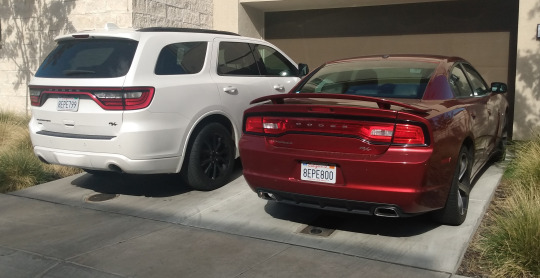
Well, the short answer to that is "design language". The explanation of that short answer, however, is a bit more complicated than that, and is about why cars look the way they look - what makes them different, what makes them similar, what makes them change and how to tell them apart. So hop on under the Read More and come learn all that!
Design language is the sum of design rules and guidelines that make a brand's product range both distinct from others and coherent within itself. If you've ever recognized whose commercial it was, who printed the book, who manufactured the device, who designed the car, that was design language doing its job!
You know those "If [brand] made [thing]" renders you see out there? That's following a brand language: crossing what [thing] looks like, which is usually pretty well determined, with the much more nebulous concept of what [brand] looks like. Defining a design language is defining the answer to that second question.
So, let's look at the Dodge lineup in 2011 (the first year with both current Charger and current Durango).

There's a couple of key shared traits: the trapezoidal grille (facing downwards in 'friendly' cars and upwards in 'aggressive' ones), the small indentation in the middle of the hood, the single angular headlight housing containing two round lighting elements, and some more minute stuff. Except one of these cars features none of that, because sometimes, when updating (and, especially, when bringing back) a model, the design traits of its ancestors are taken into account, and for the Challenger, Dodge's then-current design language was almost totally disregarded in favor of faithfulness to its 1970 ancestor.


Whereas the new Charger did the exact opposite, its 2006 revival being completely based on 2006 Dodge's design language, with extremely little left of the '60s original (I see the rear window shape and the beltline if I'm being Christmas generous). Of course, this already works towards the similarity we're getting at.
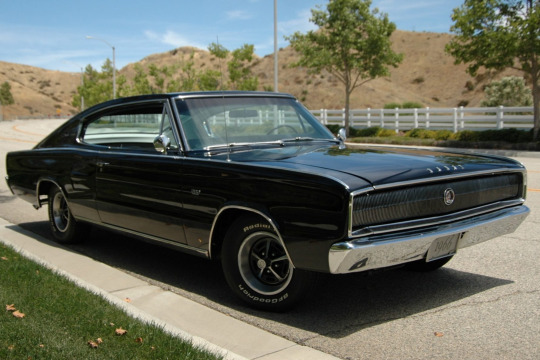
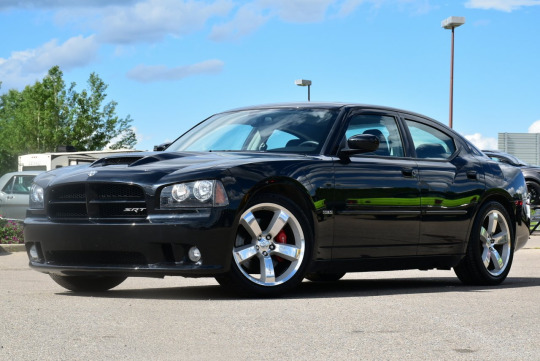
But the bulk of a car's design decisions are not about design language, but about the kind of car it has to be. A designer must contend with aerodynamics, safety requirements, customer needs and expectations, with the end result being that cars of the same segment will usually end up having the same basic proportions and largely overlapping silhouettes. See the cars below:
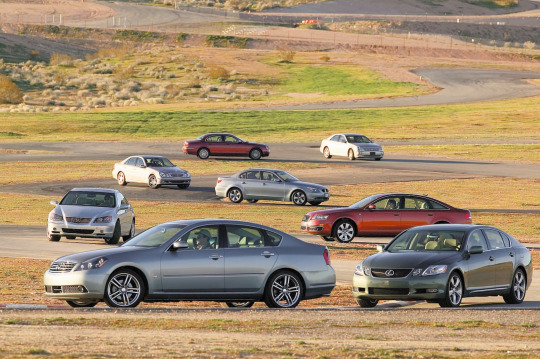
Sure, very different styles can produce a more angular or more soft outline (see the two cars in the background), but within the same era and segment many completely different cars will be almost indistinguishable between the wheels (see the two cars in the foreground). So the most design freedom is usually found in lights and grilles, since those can be quite radically altered in shape and proportions without interfering much with functionality (unlike for example window shapes or rooflines), and even slight changes in them can alter the look and perception of a car, because we parse them similarly to faces, and thus they can make a car looks angry, sad, silly, goofy, or adorably gleeful.
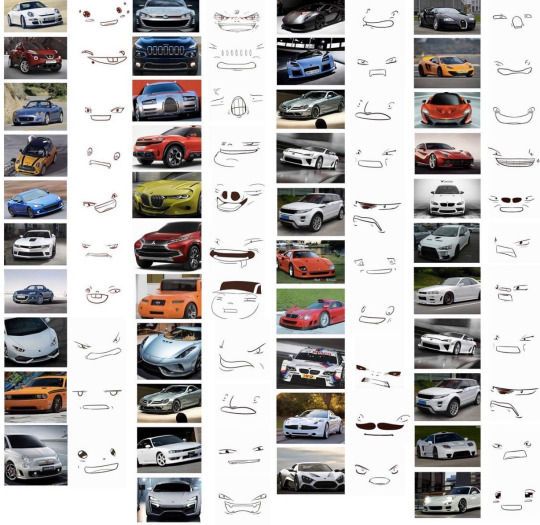
So most often, the most distinctive features of a car -and by extension of a design language- are found in lights and grilles (the outline of the headlights, the inside arrangement, the grille's shape, proportion, pattern, etc.), with the rest of the car being shaped by general principles like "angular design", "simple, smooth lines" or the likes. So if you want to learn to recognize cars, lights and grilles are usually what you should focus on, as you need to be an expert for your average car's overall shape to tell you much more than its segment and decade (and perhaps market, but that's a longer conversation). That does explain, doesn't it, why lights and grilles are similar in Charger and Durango, two cars in very different segments designed to look aggressive in a distinctly Dodge way.
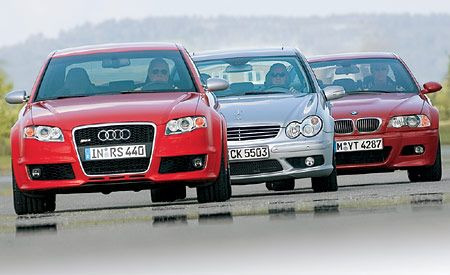
Let's exemplify this principle with three cars from the same segment, decade and country: In the mid-00s, Audi introduced a tall, chrome-lined downward trapezoid grille that contained the number plate; Mercedes had their classic grille -with the thick top chrome strip, small silver accents and the underlying middle line- and “merging circles” headlights; BMWs still had their staple "kidney grilles" and their quad circular headlights now contained in a wide, flat shape with round, downwards curving edges.
So even when these brands made different cars in different segments, those key traits kept them perfectly recognizable as theirs.
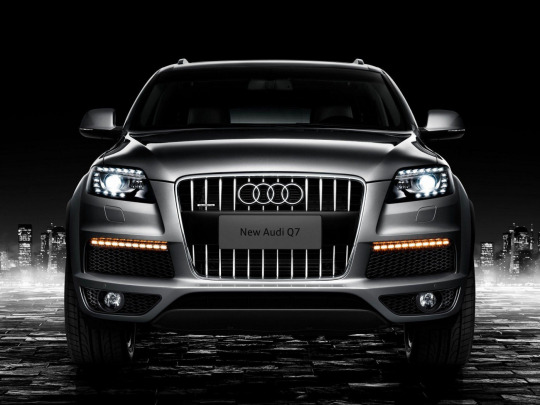
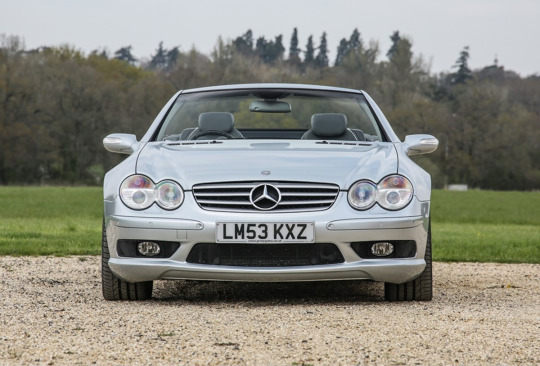
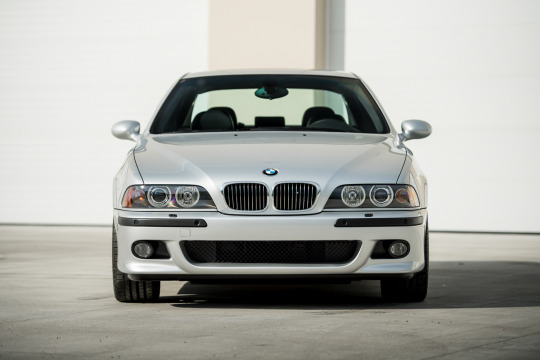
As you see in Mercedes, a brand's designs can get very consistent - but it can also get very inconsistent, too. For one, you don't design for a manufacturer, you design for buyers, so the design will change with who the buyers are, what they want, what they're attracted to - and when that is pretty consistent within a brand you get a lineup like Volvo's...

...whereas if you have a brand whose buyers vary wildly in all metrics that matter, you get a lineup like Kia's.
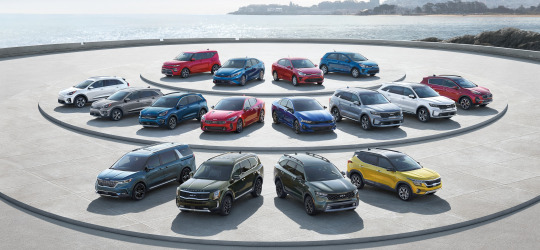
(I love this picture because you keep thinking "Well those two look similar at least" and they keep turning out to be two versions of the same car.)
The lineup's styling is also going to be more cohesive the more precious brand recognition is for it: a Ferrari needs to look like a Ferrari because that's most of why people buy a Ferrari to begin with, whereas the last time a Skoda didn't look like a Skoda it literally called for advertising.
Design languages also change and evolve with time, of course, and that's an element at play in the observation that spurred this post: Charger and Durango look similar not just because they were designed with the intention of looking similar, but also because they were updated with the goal of remaining similar, and were made even more so by the use of similar solutions to modernize their looks.
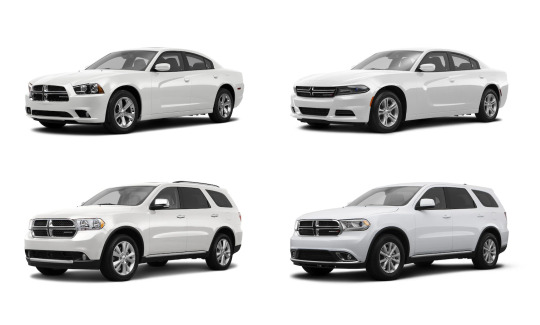
You'll notice that this was just an update of lights, bumpers and grilles - and indeed, these are what's known as "facelifts": where a new generation is usually redesigned from the ground up or retains little more than the core structure, facelifts are instead intragenerational updates that stay clear of radical changes (at most, things like hood and fenders can get updated if new headlight shapes require it).
But as we covered, those are the parts that matter - so while something as little as a facelift can be absolutely impossible to notice...

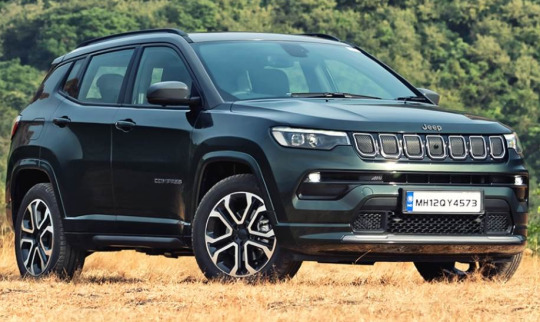
(seriously, two of my neighbors have these and it took me weeks of seeing them side by side to notice differences)
...it can also be effective enough to carry a model into a new decade...


...ore even powerful enough to completely salvage a car's design, and by extension its fortunes.

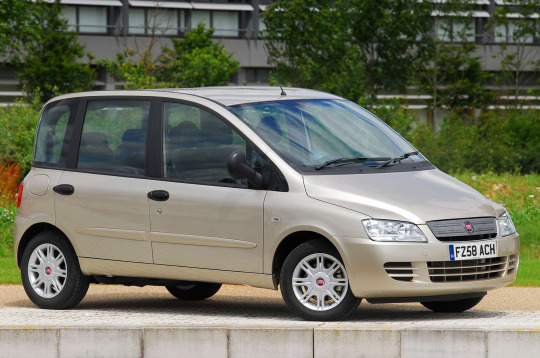
However, of course, it can wield the opposite power just as well.
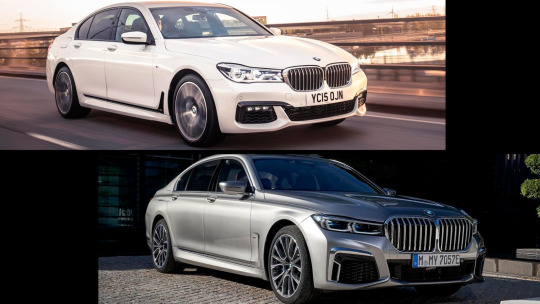
Christ. Welp, no mistaking that for not a BMW now, is there. But to be clear, while BMW's styling has completely gone down the gutter lately, don't get the impression that any brand at any time is beyond a miss in this regard.
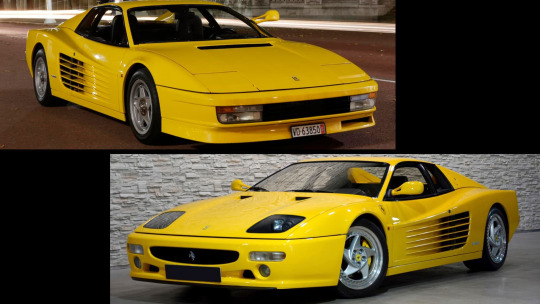
So, to close, while there is merit to the claim that cars today seem all the same, as we've discussed that's only true -and for good reasons- when looking at them from a distance. But when a landscape seems depressingly monotonous, you just have to look closer. And so, getting closer, analyzing the traits that weren't dictated by their nature, the decisions that weren't made for them by external factors, looking at what of them was shaped by agency and not necessity, they will all reveal themselves to all be different and to all have a personality of their own (bland as it may be). And that personality will change over time: changes are normal within a life, and actually good - they're a sign that life has been long enough to outlive the trends and ideas that shaped it, and that it's open to the new ones that have blossomed since. Trying too hard to fit in or stand out or seeking change for its own sake without a clear direction can ruin something good, sure, but change can also be very positive: it can allow keeping up with the times, or even a transformation for the better that lets go of what didn't work and accentuates what was good - and often, when it's done right, the world rewards it. And none of this requires a distancing from heritage or family, or even identity. In fact, as seen with our two cars, change can make a family bond even tighter.
This year will bring lots of change. Here's hoping we all manage to make it change for the better.
So yeah, hopefully that answers your question, anonymous asker who may well have fucked off to Hollywood in the over month and a half it took me to get to this (whoopsie)! Immense thanks to @ldub0775 for the effort and thought he joined me in pouring into this post, and to all followers reading this for sticking around into 2024 to witness that effort's fruits. Trust me, you will really like what's coming.
Links in blue are posts of mine about the topic in question: if you liked this post, you might like those - or the blog’s Discord server, linked in the pinned post!
#design language#car design#dodge charger#dodge durango#dodge challenger#audi#mercedes#bmw#volvo#kia#the great catchup
38 notes
·
View notes
Note
Hello! I wanted to say that I really love your stories and that they bring me so much joy!
Your works have been so much of an inspiration for me to do what I do and I really want to say thank you for that.
I'd like to ask, what advice would you give for new artists who are interested in opening their own art shop one day?
Aww, I’m really happy and honoured to hear that!
As for advice, here are some things I would have told myself when I was starting, everything is subjective and depends on the individual so do take it with a pinch of salt!
1. Start small!
It’s tempting to make large quantity orders because some manufacturers provide bigger discounts, but it’s very risky at the beginning because you don’t know what will sell. I personally rather sell out than have large stock that takes ages to sell preventing me from trying new things since you learn and change a lot at the start!
2. Draw what you love, not what is trendy or popular (eg drawing characters/relationships you love vs popular characters)
Personally, things that I draw out of love and inspiration are those that not only am I more proud of, but also sells better. If you’re passionate about it, it’s likely there’s people out there who are as passionate, and that’s where you find your niche and audience. Additionally, popular characters will most likely have well-known artists that draw for them already, so it’s difficult to breakthrough if you’re not passionate about it. If what you love overlaps with what’s trendy/popular, that’s fine!
3. Use social media wisely!
It’s the most useful but tiring tool to use. If people don’t see your stuff, they won’t know it’s out there, but don’t be too focused on numbers! Low numbers does not mean rejection, high numbers do not mean success. I’ve had plenty of reels/tiktoks with have high views and engagement that do not reflect the sales number. Don’t take data personally, consider it more as food for thought.
“why did this artwork not resonate with people? how can i improve it/showcase it better?” “why did this artwork (yours or others) resonate with people? how can i emulate this more?”
On the same note, photos/videos of your products always need to have good lighting! Sun and your phone camera is enough to start with. I recently enjoy taking photos holding my stuff against greenery.
These are some smaller thoughts:
- Try to post tiktoks only after your items are available to order (unless you’re just gauging market). I’ve had a video go viral (1m+ views) long before it was available online and when I did release it online, most people didn’t see it because that’s just how tiktok algorithm works :’) your followers are less likely to see your stuff, compared to twt/insta, imo.
- Many of my first customers became returning customers, so do ensure you treat your packages with care so they have a good experience! (i personally prepare thank you cards hehe)
- Keep packaging minimal so they are lighter and less waste. Additionally, I’ve started using less flashy packaging (brown instead of coloured) because I’ve heard coloured ones may be at risk of theft (unconfirmed). I keep decorative packaging inside only.
All the best to your endeavors!
17 notes
·
View notes
Text
South Africa government green-lights yellow maize imports from Brazil

In some coastal areas of South Africa, it is cheaper to import yellow maize from South America than sourcing it locally.
Fears of a possible shortage of yellow maize have been averted with a decision by the national department of agriculture to allow yellow maize imports from Brazil.
The National Agricultural Marketing Council estimated earlier this year that it might be necessary to import 383 000 tonnes of yellow maize – a crucial ingredient in animal feed – amid shrinking local production and rising prices brought about by lower rainfall in the country’s maize-producing regions.
While price increases have moderated since the 19% rise between January and May, it is still R275-R300 per tonne cheaper for animal feed manufacturers in the Western Cape, Eastern Cape and possibly also parts of KwaZulu-Natal to import yellow maize than transport it locally from the production areas.
Continue reading.
#brazil#brazilian politics#politics#south africa#south african politics#economy#farming#international politics#image description in alt#mod nise da silveira
9 notes
·
View notes
Photo
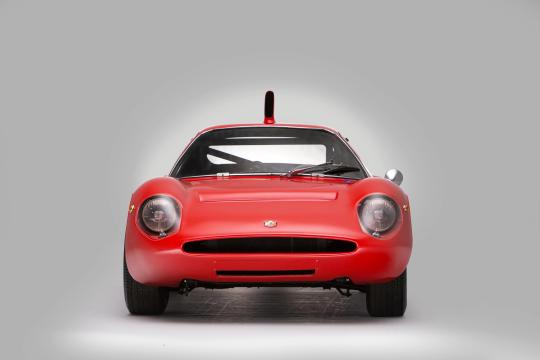
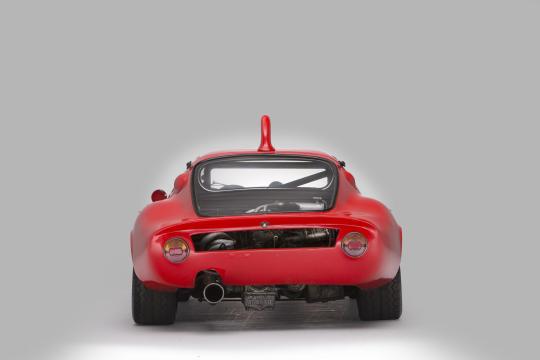
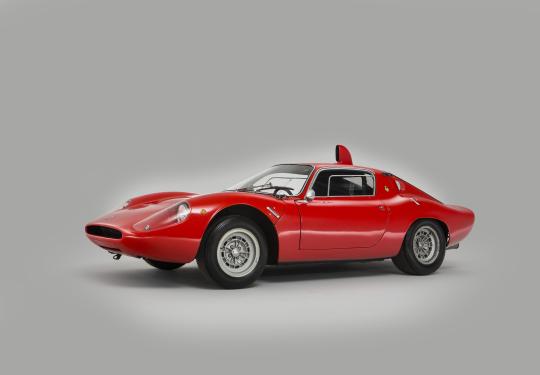
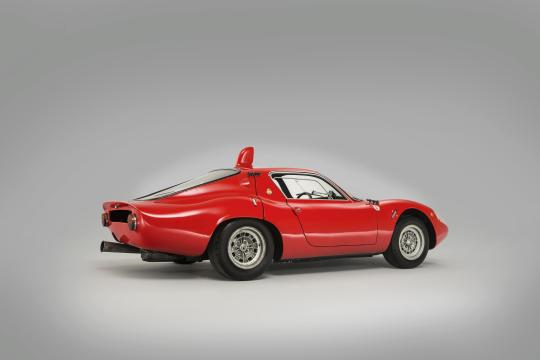
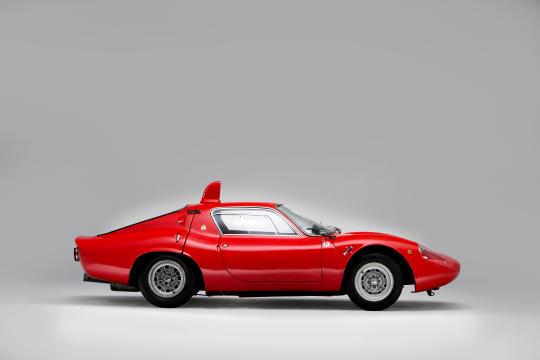
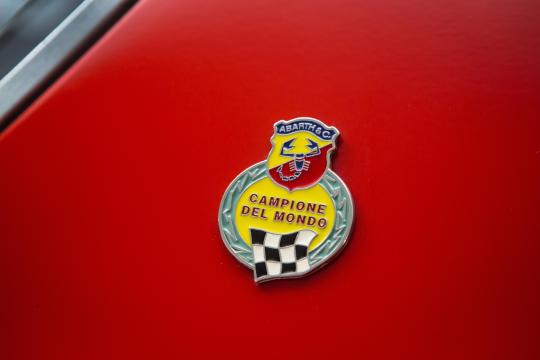
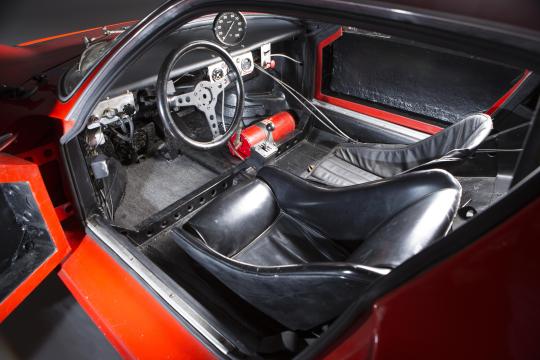
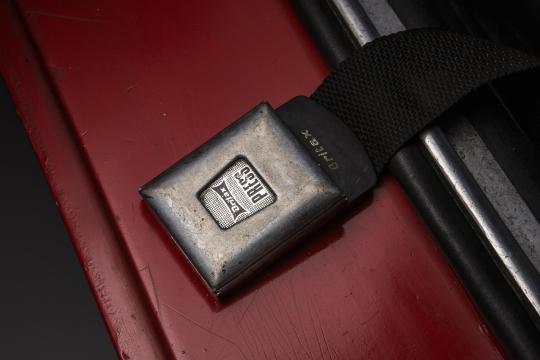
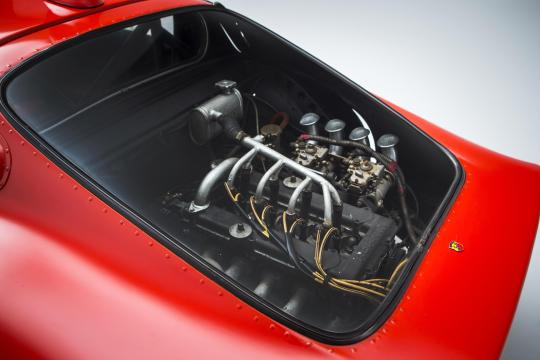
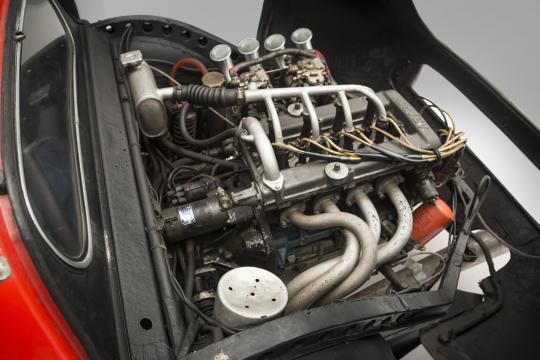
Abarth 1300OT Periscopica Coupé
In 1958, the American Chrysler Corporation pursued an entry into the European motor manufacturing market by buying 15 per cent of the French Simca company's stock from Ford. At that time, however, the dominant shareholder remained Fiat of Turin, and their influence remained distinctively apparent in the engineering and design of Simca cars for several years into the early 1960s. However, in 1963 Chrysler increased its Simca stake to a controlling 64 per cent by purchasing stock from Fiat, subsequently extending that holding to 77 per cent.
Chrysler had no interest in any continuation of the previously successful Simca Abarth and Abarth Simca high-performance car collaboration, which came to a juddering halt. In Turin Carlo Abarth found himself left more or less high and dry, but the supply of basically Simca 1000 chassis floor pans, upon which the sleek and superfast Abarth Simca 1600s and 2000s had been based, left quite a number in stock, as yet unused. The popular legend is that it was upon these unused Simca platforms that Abarth then founded his 1300cc class Gran Turismo design for 1965 – the OT 1300. Abarth's technical team under Mario Colucci had developed a boxed pressed-steel chassis structure on the modified Simca 1000 floor pan to which allindependent suspension was attached with componentry drawn from the Fiat 850 shelves. The Abarth OT 1300 then emerged, to race for the first time as a prototype in the September, 1965, Nurburgring 500-Kilometre classic.
Driver Klaus Steinmetz hammered the new Coupé home to a fine third-place finish overall and the OT 1300 was up and running into the record books, becoming one of the most successful – and also one of the most distinctive – models that Abarth & C ever produced. The OT 1300's rear-mounted all-Abarth engine was overhung – in best Carlo Abarth-approved style. It was a 4-cylinder unit with twin overhead camshaft cylinder head, using a block with cylinder bore and stroke dimensions of 86mm x 55.5mm to displace 1289cc.
With two valves per cylinder and a 10.5:1 compression ratio, the engine breathed through two twin-choke Weber 45DCOE9 carburettors. Ignition was by two plugs per cylinder, fired by single distributor. Dry-sump lubrication was adopted and the power unit produced a reliable 147bhp at 8,800rpm. This lusty engine, perfected by Abarth's power-unit specialist Luciano Fochi with five main-bearing crankshaft, drove via a five-speed and reverse Abarth transaxle.
Wheelbase length of the OT 1300 was nominally 2015mm, front track 1296mm and rear track 1340mm. It featured moulded glassfibre clamshell-style opening front and rear body sections moulded by Sibona & Basano in Turin, and this pert-nosed Coupé became a familiar sight dominating its class for three consecutive years. Production of the OT 1300 began on May 15 1966 and ended on March 30, 1966, by which time the minimum production number of 50 required by the FIA for homologation as a Gran Turismo model had (allegedly) been achieved. The most distinctive single characteristic of the OT 1300 Coupé, apart from its huge International success within its class, was its adoption of the Periscopica air-cooling intake on the rear of the cabin roof. Casual onlookers would assume that the periscopelike intake fed intake air into the rear-mounted engine, but this is absolutely not the case. Instead, the water and oil-cooling pipe runs through the cockpit area heated-up the cabin to what was generally considered to be an unacceptable level for endurance racing, and the periscope intake merely blasted cold air down into the cabin to cool the driver himself...
From the OT 1300 Mario Colucci developed the OT 2000 Coupé using the 1946cc 4-cylinder power unit perfected by his colleague Luciano Fochi and with some 215bhp at 7,600rpm that largerengined model was capable of exceeding 165mph in a straight line. In fact all these Abarths with their sleek aerodynamic bodies and light weight really were exceedingly rapid by the standards of the time and within their respective capacity classes.
98 notes
·
View notes
Text
How Apple Relies on Samsung for iPhone Production
Apple and Samsung are two big rivals in the technology industry, and are often portrayed as rivals in the smartphone market. Behind the scenes, however, Apple relies on Samsung for key components used in its flagship product, the iPhone. This relationship may seem odd, but it illustrates the complex nature of global supply chains in the technology sector. In this blog we will examine how Apple trusts Samsung and why this relationship is so important to the creation of the iPhone.

1. The OLED Displays: Samsung’s Technological Edge
One of the most critical components in modern iPhones is the OLED (Organic Light-Emitting Diode) display. These displays are known for their vibrant colors, deep blacks, and energy efficiency, significantly enhancing the user experience compared to older LCD technology. Samsung Display, a subsidiary of Samsung Electronics, is the world’s leading manufacturer of OLED screens.
When Apple transitioned to OLED screens with the iPhone X in 2017, it turned to Samsung due to the company’s unparalleled expertise and production capacity in OLED technology. While Apple has since diversified its suppliers, with LG Display and others entering the fray, Samsung remains the largest provider of OLED screens for iPhones. Samsung’s dominance in this sector gives Apple little choice but to collaborate with its competitor.
2. Chips and Semiconductors: More Than Just Displays
Apple designs its own A-series chips, but the actual production of these chips relies on external manufacturing. While companies like TSMC (Taiwan Semiconductor Manufacturing Company) handle most of Apple’s chip production, Samsung has also played a role in this arena. Samsung is one of the few companies with the technological prowess and manufacturing capabilities to produce advanced semiconductor components.
In previous iPhone generations, Samsung produced the A-series chips that powered these devices. Although TSMC has since become Apple’s primary chip manufacturer, Samsung’s semiconductor division remains a key player in the global chip market, offering Apple an alternative supplier when needed.
3. Memory and Storage: Another Piece of the Puzzle
In addition to displays and semiconductors, Samsung provides memory components such as DRAM (Dynamic Random-Access Memory) and NAND flash storage for the iPhone. These memory components are essential for the smooth operation and storage capacity of iPhones. With its dominance in the memory market, Samsung is one of Apple’s main suppliers, providing the high-quality memory needed to meet the iPhone’s performance standards.
Apple has worked to reduce its reliance on Samsung for memory, but the reality is that Samsung’s market share in the memory and storage sectors is so substantial that avoiding them entirely is nearly impossible. Furthermore, Samsung’s advanced manufacturing techniques ensure that its memory components meet the rigorous standards required for the iPhone.
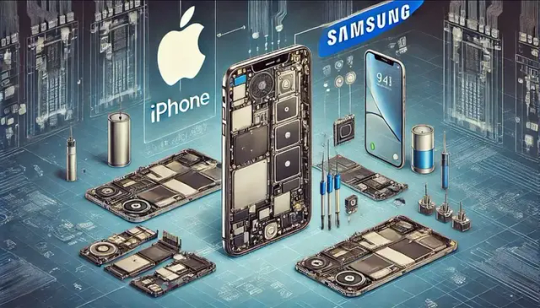
4. Why Apple Sticks with Samsung Despite the Rivalry
Given their rivalry in the smartphone market, one might wonder why Apple doesn’t completely break away from Samsung. The answer lies in the intricate balance between quality, capacity, and supply chain stability.
Quality: Samsung’s components, particularly OLED displays and memory, are some of the best in the industry. Apple has always prioritized quality in its products, and Samsung’s technological capabilities align with Apple’s high standards.
Capacity: Samsung has the production capacity to meet Apple’s enormous demand. With millions of iPhones sold each year, Apple needs suppliers that can manufacture components at scale without compromising quality. Samsung’s factories are among the few capable of handling such volume.
Supply Chain Risk: Diversifying suppliers is a strategy Apple uses to reduce risk. However, removing Samsung from the supply chain entirely would expose Apple to greater risk if another supplier fails to meet production needs or quality standards. By maintaining Samsung as a key supplier, Apple can ensure a more stable and reliable supply chain.
5. Apple’s Efforts to Reduce Dependency
While Apple remains dependent on Samsung in several areas, the company has made moves to reduce this reliance over the years. For instance, Apple has invested in alternative display suppliers such as LG Display and BOE Technology, as well as expanded its collaboration with TSMC for chip production. Additionally, Apple has explored developing its own in-house components, such as its rumored efforts to create proprietary display technology.
Despite these efforts, it’s unlikely that Apple will be able to completely eliminate Samsung from its supply chain in the near future. Samsung’s technological leadership in key areas, especially OLED displays and memory, ensures that Apple will continue to rely on its competitor for critical components.
Conclusion: A Symbiotic Rivalry
The relationship between Apple and Samsung is a fascinating example of how competition and collaboration can coexist in the tech industry. While they are fierce competitors in the smartphone market, Apple depends on Samsung’s advanced manufacturing capabilities to produce the iPhone, one of the most iconic devices in the world. This interdependence shows that even the most successful companies cannot operate in isolation, and collaboration between rivals is often necessary to bring cutting-edge products to market.
For Apple, the challenge lies in maintaining this balance — relying on Samsung for essential components while exploring new avenues to reduce dependency. For now, however, Samsung remains a crucial partner in the making of the iPhone, demonstrating how complex and interconnected the global tech supply chain has become.
4 notes
·
View notes
Text
ah still caint believe the girl who midjourneys us the backgrounds for the main product shots gets paid about as much per final version as i do for one entire multi-page product specs + e-commerce layout with illustrations and details and Why You Should Choose Our Epic Prodact 💪🔥 essays. no shade to her because she did know what she was doing and the backgrounds were nice and very hi res (she had to work with the full product pics id been given which were SHITE lol she had to enhance them heavily) and she customized them to the very specific instructions i gave her and sent me like 10 versions to choose from every time and generally (the following i suppose is aimed at people who object to any use of generative ai for any visuals ever) the process is just far more efficient than having someone fuckin run out there with the idk tarp tunnel looking for the right Surrounding Foliage and light angle that i wouldve found Acceptable. like i was like yeah girl i need 2pm july/august thinly overcast daylight meaning neutral-warm but no sharp chiaroscuro please and some waist-height pink and purple azaleas for this one and some blue and white hydrangeas of this height and with a light yellow tint on the leaves and darker conifers covering this amount of background oh and can you put a little stone path inside the larger tunnel running thru the middle. and she was like On It Boss. so again no shade to her i think shes been doing a great job. im just saying that i Objectively do more work than she does and i should be paid better than i am LOL
like considering im also tasked with doing all the market research as in i compare web store descriptions and reviews and what specs are sought after and so on. and sometimes im given so little info about the product (which in case its not obvious is not out yet) that step one for me is figuring out how the hell the thing even works by comparing similar products and comparing info and asking for verification from manufacturer if needed. like ok i didnt know how this fucking atomizer worked, and apparently most gardeners in 2024 already do and im stupid, so i had to look at youtube videos with 500 views and in slovak to see someone actually use the thing. anyway ends up i have to finish two entire projects today (thought i had time until 10th but i dont lol) which i only have rough drafts for rn and its doable sure like yeah i can do it before 23:59 which means contractually Ive Done My Job but goddddd i wish it wasnt today of all days like i feel like death and i have to take gaia to the vet later today and its so hot today my cintiq keeps turning into a hot coal
tl;dr I Am Stuck In Garden Tool And Accessory Madness And I Havent Even Been In A Garden Or Any Similar Nice Green Outdoors Area For A Solid Year At This Point

17 notes
·
View notes
Text
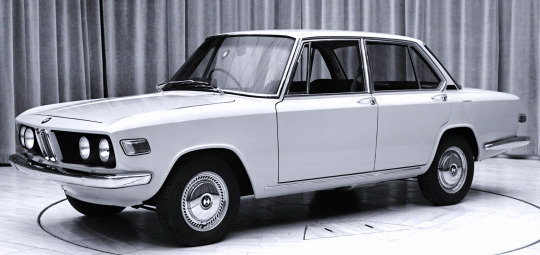


BMW Glas 2000 SA Prototyp, 1970. When BMW took over rival German manufacturer Glas 1966 they inherited a range of models, many of which were direct competitors to BMW's own lineup. Some were rebadged as BMWs, others simply retired. The car that became the 2000 had begun life as the Glas 1700 in 1963, designed by Pietro Frua. BMW discontinued the 1700 on the German market in 1967 however they continued to make CKD kits for the South African market where the cars were facelifted to conform to BMW's design language with the 4-eyed light architecture and the kidney grille. The cars remained in production until the BMW Group took complete control of the South Africa plant in 1974 and the Glas-based models were finally discontinued to be replaced by South African built E12 5-series
#BMW#Glas#BMW Glas 2000 SA Prototyp#prototype#badge engineering#1970#1970s#Glas 1700#Pietro Frua#South African market#saloon#]
152 notes
·
View notes
Text
A Hell of a Rockstar
This was gonna be it, this was how we gonna become a rockstar. Signing up with Vandelay's Armstrong Project was his ticket to fixing his right arm. From reception to the campus' courtyard, Chai had a pep in his step, no longer will he be dealing with his disability and he can finally live his dream. All he had to do was sleep through his surgery. He disrobed and got into a medical gown, placed all of his belongings like his MP3 player and made his way down the line. He couldn't help but look in awe at the manufacturing of the establishment, all huge and self sufficient. He was so distracted he didn't notice himself getting shoved onto a large table and got strapped in.
Up above several platforms from Chai, the president, Kale Vandelay, was discussing how the people they recruited.
"You promised me the best of the best, Mimosa!" Kale exclaimed to a woman with blonde hair in a excessively stylish blue and purple business outfit with yellow highlights.
"Production asked for test subjects, Kale. Marketing delivered," Mimosa said, motioning a side glance and a wave to a hulking lady with tanned skin, black and red hair that matched the makeup she wore.
"Don't pin it on Rekka!" the hulking lady growled with a thumb to herself with fists clenched. "Tell that grandstander Zanzo in R&D to-"
"We need people with influence, and you're giving me..." Kale cut in before picking up a MP3 player from the personal belongings from their test subjects. "LOSERS!"
"It will work," Mimosa reassured.
"It better. No screw ups! And no, DEFECTS," Kale firmly stated with eyes narrowed. He turned and examined the old MP3 player he had. "What a piece of junk," he scoffed before tossing it over the catwalk.
The MP3 would bounce off from pipe, railings and lights before falling further down to the surgery below.
Chai looked on as a large pressure plate with sensors and circuits scanned him. He waited as the operation was about to begin, only to feel a thud on his chest. He looked down to see an MP3 had landed on him.
"Uuuuuhhh..." Was all he could muster nervously before being slammed down by the machine.
Blinking into reality, Chai yawned as he woke up before sitting up. Though, he did not expect to be slap down in the middle of the streets with red buildings, skies, EVERYTHING was red.
"Am I dreaming?" Chai questioned before pinching his left arm. "Ow! Okay, not a-" He paused as he just realized he moved his right arm. When looking over, his whole right arm was replaced and he was rocking some new clothes. A black jacket, red shirt with a crushed star, jeans, sneakers and a yellow scarf with red flaming tips. "Oh, sweet! Guess some event must be happening in the campus," Chai convinced himself as he began to walk around, seeing all sorts of freaks from imps, ghouls, etc.
"Is it Halloween or something?"
7 notes
·
View notes
Text
The phone or computer you’re reading this on may not be long for this world. Maybe you’ll drop it in water, or your dog will make a chew toy of it, or it’ll reach obsolescence. If you can’t repair it and have to discard it, the device will become e-waste, joining an alarmingly large mountain of defunct TVs, refrigerators, washing machines, cameras, routers, electric toothbrushes, headphones. This is “electrical and electronic equipment,” aka EEE—anything with a plug or battery. It’s increasingly out of control.
As economies develop and the consumerist lifestyle spreads around the world, e-waste has turned into a full-blown environmental crisis. People living in high-income countries own, on average, 109 EEE devices per capita, while those in low-income nations have just four. A new UN report finds that in 2022, humanity churned out 137 billion pounds of e-waste—more than 17 pounds for every person on Earth—and recycled less than a quarter of it.
That also represents about $62 billion worth of recoverable materials, like iron, copper, and gold, hitting e-waste landfills each year. At this pace, e-waste will grow by 33 percent by 2030, while the recycling rate could decline to 20 percent. (You can see this growth in the graph below: purple is EEE on the market, black is e-waste, and green is what gets recycled.)
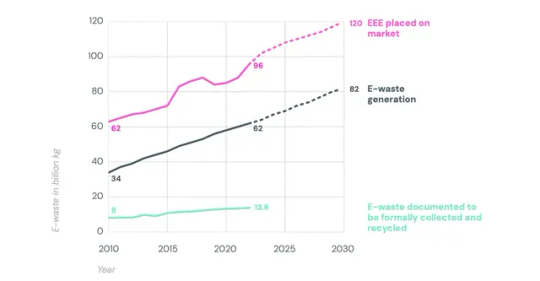
“What was really alarming to me is that the speed at which this is growing is much quicker than the speed that e-waste is properly collected and recycled,” says Kees Baldé, a senior scientific specialist at the United Nations Institute for Training and Research and lead author of the report. “We just consume way too much, and we dispose of things way too quickly. We buy things we may not even need, because it's just very cheap. And also these products are not designed to be repaired.”
Humanity has to quickly bump up those recycling rates, the report stresses. In the first pie chart below, you can see the significant amount of metals we could be saving, mostly iron (chemical symbol Fe, in light gray), along with aluminum (Al, in dark gray), copper (Cu), and nickel (Ni). Other EEE metals include zinc, tin, and antimony. Overall, the report found that in 2022, generated e-waste contained 68 billion pounds of metal.

E-waste is a complex thing to break down: A washing machine is made of totally different components than a TV. And even for product categories, not only do different brands use different manufacturing processes, but even different models within those brands vary significantly. A new washing machine has way more sensors and other electronics than one built 30 years ago.
Complicating matters even further, e-waste can contain hazardous materials, like cobalt, flame retardants, and lead. The report found that each year, improperly processed e-waste releases more than 125,000 pounds of mercury alone, imperiling the health of humans and other animals. “Electronic waste is an extremely complex waste stream,” says Vanessa Gray, head of the Environment and Emergency Telecommunications Division at the UN’s International Telecommunication Union and an author of the report. “You have a lot of value in electronic waste, but you also have a lot of toxic materials that are dangerous to the environment.”
That makes recycling e-waste a dangerous occupation. In low- and middle-income countries, informal e-waste recyclers might go door-to-door collecting the stuff. To extract valuable metals, they melt down components without proper safety equipment, poisoning themselves and the environment. The new report notes that in total, 7.3 billion pounds of e-waste is shipped uncontrolled globally, meaning its ultimate management is unknown and likely not done in an environmentally friendly way. Of that, high-income countries shipped 1.8 billion pounds to low- and middle-income countries in 2022, swamping them with dangerous materials.
High-income countries have some of this informal recycling, but they also have formal facilities where e-waste is sorted and safely broken down. Europe, for example, has fairly high formal e-waste recycling rates, at about 43 percent. But globally, recycling is happening nowhere near enough to keep up with the year-over-year growth of the waste. Instead of properly mining EEE for metals, humanity keeps mining more ore out of the ground.
Still, the report found that even the small amount of e-waste that currently gets recycled avoided the mining of 2 trillion pounds of ore for virgin metal in 2022. (It takes a lot of ore to produce a little bit of metal.) The more metals we can recycle from e-waste, the less mining we’ll need to support the proliferation of gadgets. That would in turn avoid the greenhouse gases from such mining operations, plus losses of biodiversity.
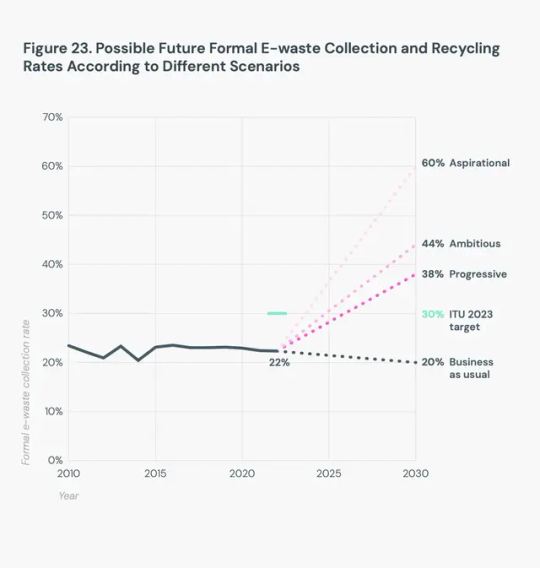
The complexity of e-waste, though, makes it expensive to process. As the chart above shows, even an ambitious scenario of a formal e-waste collection rate in 2030 is 44 percent. “There is no business case for companies to just collect e-waste and to make a profit out of this in a sustainable manner,” says Baldé. “They can only survive if there is legislation in place which is also compensating them.”
The report notes that 81 countries have e-waste policies on the books, and of those, 67 have provisions regarding extended producer responsibility, or EPR. This involves fees paid by manufacturers of EEE that would go toward e-waste management.
Of course, people could also stop throwing so many devices away in the first place, something right-to-repair advocates have spent years fighting for. Batteries, for instance, lose capacity after a certain number of charge cycles. If a phone can’t hold a charge all day anymore, customers should be able to swap in a new battery. “Manufacturers shouldn't be able to put artificial limitations on that ability,” says Elizabeth Chamberlain, director of sustainability at iFixit, which provides repair guides and tools. That includes limiting access to parts and documentation. “Repair is a harm-reduction strategy. It's not the be-all-end-all solution, but it's one of many things we need to do as a global society to slow down the rate at which we're demanding things of the planet.”
At the core of the e-waste crisis is the demand: A growing human population needs phones to communicate and fridges to keep food safe and heat pumps to stay comfortable indoors. So first and foremost we need high-quality products that don’t immediately break down, but also the right to repair when they do. And what absolutely can’t be fixed needs to move through a safe, robust e-waste recycling system. “We are consuming so much,” says Baldé, “we cannot really recycle our way out of the problem.”
26 notes
·
View notes
Text
Excerpt from this story from the New York Times:
The Biden administration on Friday tightened vehicle fuel mileage standards, part of its strategy to transform the American auto market into one that is dominated by electric vehicles that do not emit the pollution that is heating the planet.
The new mileage standards announced by the Transportation Department are among several regulations the administration is using to prod carmakers to produce more electric vehicles. In April, the Environmental Protection Agency issued strict new limits on tailpipe pollution that are designed to ensure that the majority of new passenger cars and light trucks sold in the United States are all-electric or hybrids by 2032, up from 7.6 percent last year.
In addition to the regulations, the 2022 Inflation Reduction Act, championed by Mr. Biden, provides tax credits for buyers of new and used electric vehicles, along with incentives for charging stations and grants and loans for manufacturers.
The push for more E.V.s comes as the world’s leading climate experts say that retiring the internal combustion engine is critical to staving off the most deadly effects of global warming.
But Mr. Biden’s efforts have become a meaty target for former President Donald J. Trump and other Republicans who frame them as the federal government taking away consumer choice. The oil and gas industry is spending millions on advertising that falsely calls Mr. Biden’s policies a ban on conventional cars.
The new standards require American automakers to increase fuel economy so that, across their product lines, their passenger cars would average 65 miles per gallon by 2031, up from 48.7 miles today. The average mileage for light trucks, including pickup trucks and sport utility vehicles, would have to reach 45 miles per gallon, up from 35.1 miles per gallon.
The standards will also require heavy-duty pickup trucks, such as the Chevrolet Silverado 2500 HD, and large vans, such as Amazon delivery vans, to reach 35 miles per gallon by 2035, up from 18.8 miles per gallon today.
The E.P.A.’s emissions rule and the Transportation Department’s mileage standard were designed to achieve similar results through different means. The E.P.A. rule lowers the amount of carbon dioxide that can be emitted from a vehicle’s tailpipe. The Transportation Department rule lowers the amount of gasoline, the fuel that produces the carbon dioxide pollution, that a vehicle can burn in order to move.
6 notes
·
View notes
Note
Hey Pink,
so I went to a flea market today and scored a old singer machine for 10€! Now I'd like to know when it was made and probably where but I'm completely lost, maybe you could shed a little light on it?
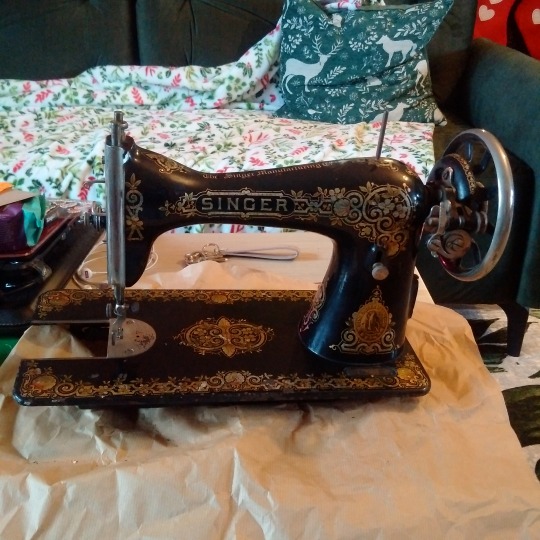

I cleaned the serial number plate as best I could. I suppose it reads: G67875 (2 or Z, I cannot tell)
Thank you so much!
It's a Model 15!
Here's some more information on the Model 15. Note that they're calling theirs the "15K", but the K just indicates that it was made in Scotland. Yours is likely a 15 and not a 15k, unless it says it was made in Great Brittan in the text along the top.
If you're ever unsure about the date on a Singer machine, I recommend this taxonomic key, and the Ismacs serial number database.
We can tell from the bobbin threading path on the front that this is a very early Model 15. According to the serial number, it's likely one of a lot of 50,000 made in January of 1910.
I believe the decal style on that is called Tiffany or Gingerbread. The first thing that I noticed about that is the absolutely exceptional state of those decals. Usually, machines of this age have a lot of the decal work worn off. If you want to clean them, be careful about damaging them.
The best advice I've found for cleaning and restoring old machines is from Doug at treadleon.net. Here's an excerpt from one of his articles:
Now let's talk about appearance. Some folks like to see an old machine shine like new. If the basic decoration, paint and decals, is good enough, that can be done. Most machines we find in sales aren't quite that good, or may actually be very bad. I like to let old machines show their age and usefulness. To clean a machine's surface, I use first a gentle mix of diluted dish soap and water, rubbing small areas at a time with a soft cloth. Often there is old dried oil or shellac on the surface. The earlier cleaning with kerosene may have loosened a lot of that up and it will rub off, too. Often it can be scraped off with a fingernail. Don't use hard scrapers, you'll scratch the enamel. Once I have the plain dirt off, I wipe with sewing machine oil several times over a period of days, then wipe off all the oil and wax. I use Turtle Wax. Other folks have had good luck with ArmorAll.
There are folks who favor various cleaning compounds, such as Simple Green, 409, Windex, etc. Great care must be exercised here. Many of the chemicals in these compounds, especially ammonia, will destroy the gold in the decals, leaving you with silver decals, or no decals. Since the decal content and manufacturing varied over the years and between manufacturers, the fact that a product did a great job on one machine does not mean it will not damage another. Always start by cleaning a small area in back of the pillar to see what is going to happen.
I've also found that liquid wrench spray penetrating oil can get through some really nasty dirt on the machines and it pretty decal-safe. It's become my main "clean now or else" tool for when dish soap is not doing the job fast enough.
One really cool fact about the Model 15 is that any time you're looking at sewing machine parts and you see the number 15, it's likely because it was a part first used in this machine. They use our standard needle, which is the needle family 15x1. If you go out and buy a standard sewing machine needle today, it will be a 15x1. When you go buy the standard bobbin for most Singer/Janome/Baby Lock/Brother/Bernette machines (plus some Pfaffs and Vikings), it's called the Class 15 bobbin. That's because the first machine to use these needles and these bobbins was the Singer Model 15. It's that influential.

The Model 15 sits flat on a table even without a bottom case, though you can buy some really nice bottom case reproductions on etsy or get a generic flatbed machine case from SewingPartsOnline if you do want a base for it. Note that if you use a generic case, you'll have to take the hand crank off when you store it with the lid on it. That said, I have my hand crank machine in a cheap generic flat bed case and it's always quite an enjoyment when someone opens it up and expects a mid-1990's machine and SURPRISE! It's an antique!!
Anyway, excellent find! The Model 15 was hugely influential. Pretty much any time that you find a modern sewing machine thing with the number 15 on it, it's because the item was first used on the Model 15. The needle family that all non-industrial sewing machines use today is the 15x1 needle family. That needle was first used on the Model 15. If you buy bobbins for almost any Janome/Brother/Baby Lock/Bernette and many Pfaffs and Vikings, it's called the Class 15 bobbin. That bobbin style was made for the Model 15 machine. I just think it's so cool that this machine became the standard so effectively that you can just go down to your local big box craft store and buy needles and bobbins for it!
PS if anyone wants a sewing-related rabbit hole to go down, Japanese Model 15 clones that are actually improvements on the Model 15 is a good one to check out. It was cloned long after Singer discontinued the Model 15.
96 notes
·
View notes